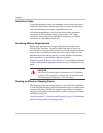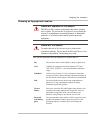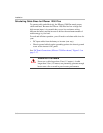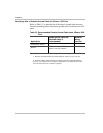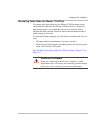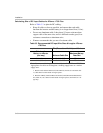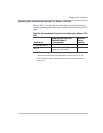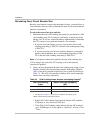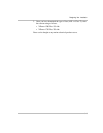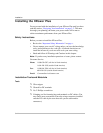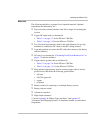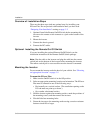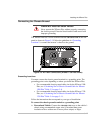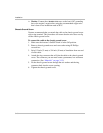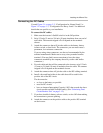
Installation
3–12
Calculating Fuse/Circuit Breaker Size
Because your batteries can provide thousands of amps, you need fuses or
circuit breakers that can safely withstand the short-circuit current that the
batteries can produce.
To select the correct fuse type and size:
1. Determine the total cold cranking amp rating for your batteries. (The
cold cranking amp (CCA) rating of each battery is displayed on the
battery case. If it is not, contact the battery manufacturer to determine
the CCA rating of your particular batteries.) For example:
• If you are using one battery to power your inverter and its cold
cranking amp rating is 500 CCA, the total cold cranking amp rating
is 500 CCA.
• If you are powering your inverter with two batteries connected in
parallel, and each battery has a cold cranking amp rating of 500
CCA, the total cold cranking amp rating is 1000 CCA.
2. Once you have determined the total cold cranking amp rating of your
batteries, identify the corresponding Ampere Interrupting Capacity
(AIC) of the fuse or breaker required for your system by referring to
Table 3-5. (The AIC is the amount of battery short-circuit amperage
that the fuse can safely withstand.)
• If the Total Cold Cranking Amps indicate that the AIC needed is
2,700 amps or less, choose an ANL fuse.
• If the Total Cold Cranking Amps indicate that the AIC needed is
up to 20,000 amps or if you require a “code fuse”, choose a Class
T fuse.
Note
: For batteries connected in parallel, the total cold cranking amp
(CCA) rating is the sum of the CCA ratings of all of the batteries
connected in parallel.
Table 3-5 Cold Cranking Amps/ Ampere Interrupting Capacity
1
1. The figures in Table 3-5 are based on standards developed by the
ABYC (American Boat and Yacht Council).
Total Cold Cranking
Amps
Ampere Interrupting Capacity
(AIC)
650 or less 1500
651–1100 3000
over 1100 5000



